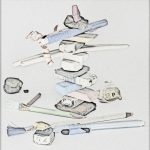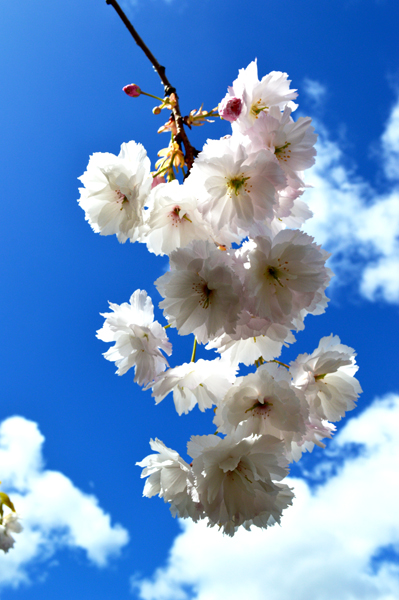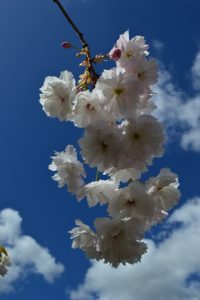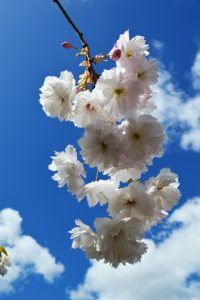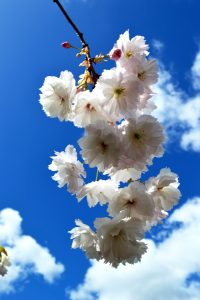Back in the Olden Days* people used to cough and sneeze into a handkerchief.
Medical masks have a strict criteria and are precisely made with specialized materials. Outside of that world, homemade masks can help reduce the outward spray of droplets from a cough or sneeze. Think of Homemade Masks as a constantly worn handkerchief.
With experience in garment making we were full of suggestions for handsewn masks (consider a box pleat rather than knife pleats, etc.). Then we figured that everyone with that skill set is already problem-solving and has advice to offer to us!
So this blog post will focus on coming up with creative solutions to cover your nose and mouth using materials at hand.
A brief note about our Styrofoam Head Model: nothing fits her well – she has no ears!
Dish Cloth Bandhana
This idea is a good grab and go, launder often option. This is big enough to cascade over the shoulders.
Our Great Grandmother embroidered this dish cloth:
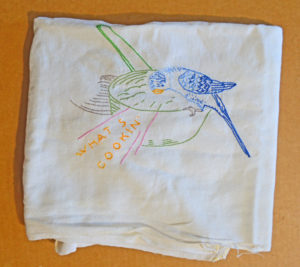
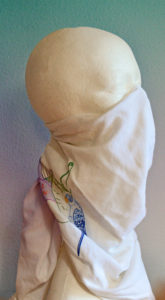
Kitchen towel mask – a more secure variation.
Also, it has the advantage of being able to eat and drink through a straw while wearing.
Supply list
- woven towel (this one is from a $store)
- two safety pins (or sew on buttons or snaps)
- Gift ribbon (or anything long and flexible like shoe laces, strips of fabric, etc. . .)
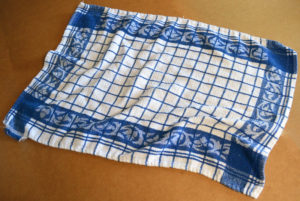
Fold towel on the diagonal. The bias allows the material to curve up over the nose better.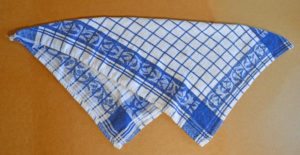
Measure your face by stretching your hand pinky to thumb from temple to temple. Place two safety pins this far apart , centered, one inch from the folded edge. Make certain that the points are aimed down, away from your eyes. Or stitch on the ribbon ends in the third step.
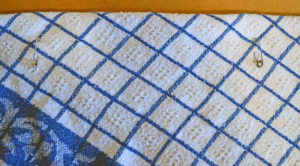
Tie on ribbons to the pins, or stitch on, long enough to tie around your head.
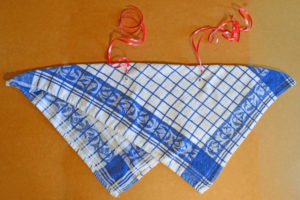
Fold down the excess fabric above the pins so that it points to the center.
Front view:
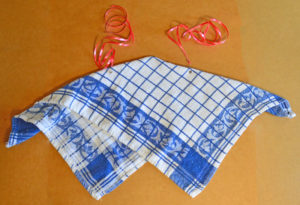
Back view:
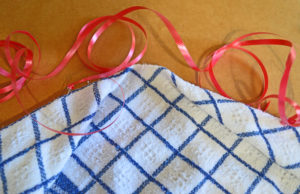
All finished!
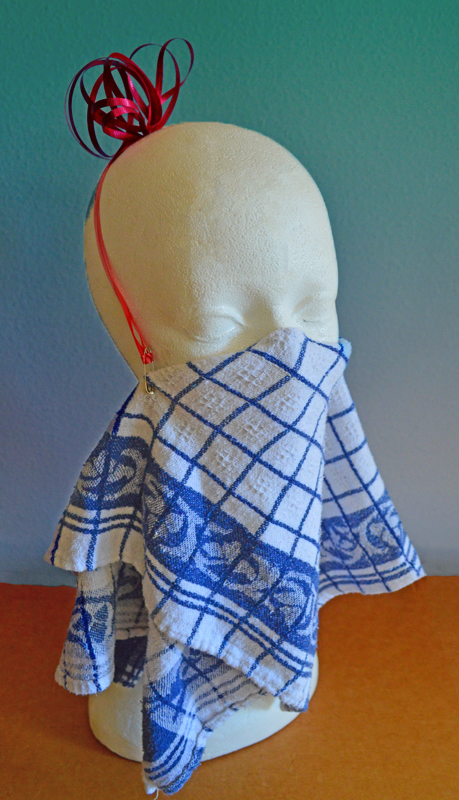
Clothing, worn backwards
This has a couple advantages. It can match a uniform if a Deemed Essential Job requires it. And probably more importantly, small children may be willing to play the “Let’s wear our shirts backwards game ” or more simply “Let’s dress silly today!”!
Notice on this turtleneck, sweatshirt and t-shirt how the back of the necks are cut higher than the fronts. This extra fabric can cover the mouth and nose if worn backwards. This is a good way to use outgrown clothing, a child’s size t-shirt makes a good mask for an adult woman, or temporarily stitch the neck smaller to fit as we did for the sweatshirt on the mannequin photograph.
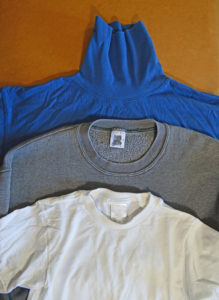
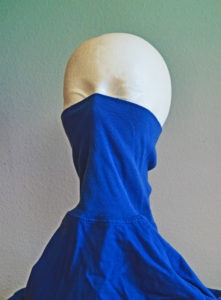
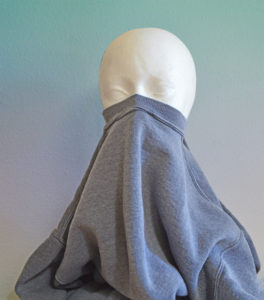
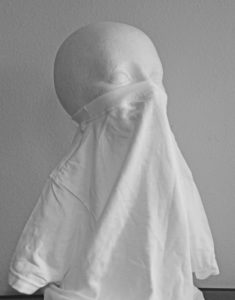
You can increase the barrier with a second step. Pin or stitch the sleeves in front:
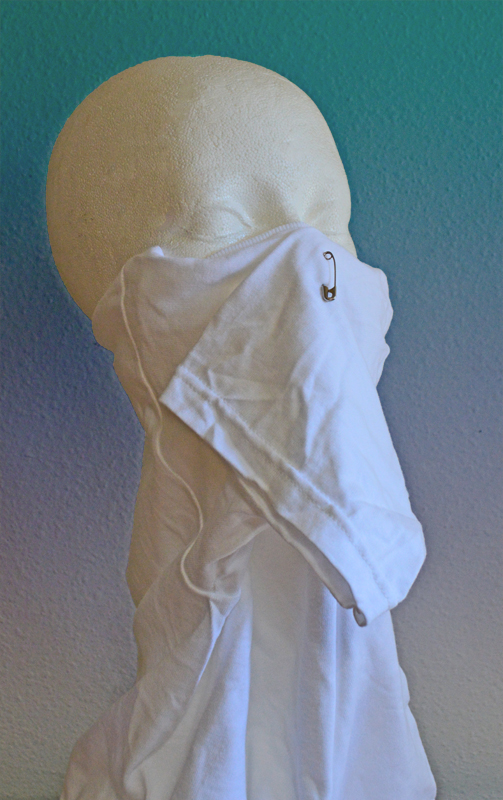
Clothing, a more fitted version.
Wear a hoody backwards! Notice how the curve of the hood matches a facemask curve. Attach ribbon, cords, yarn or fabric tapes with snaps, buttons, safety pins (point away from the eyes!), staples or even sew on. Use a garment with an attached hood, or a detachable one for more freedom of movement.
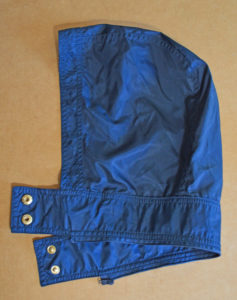
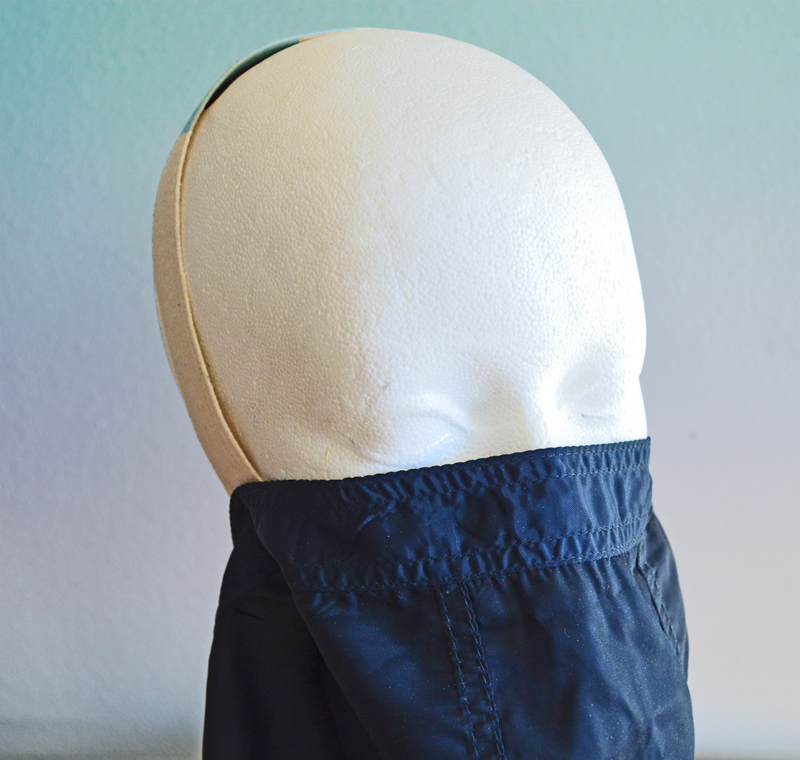
Please remember to let your Creativity in on your problem solving. You may be surprised at what your intuition inspires!
- Be Resourceful
- Be Mindful
- Be Thoughtful
- Be Well
We hope this helps ease some worries.
from Allyson and Kristin
*When men used to tuck in their shirts and women wore their underwear under clothes!

 The next composition to come out of this fiber stash is from the Viola Tricolor family, a Heartsease flower (a.k.a. Johnny-Jump-Up), inspired by a sketch in Kristin’s sketch pad.
The next composition to come out of this fiber stash is from the Viola Tricolor family, a Heartsease flower (a.k.a. Johnny-Jump-Up), inspired by a sketch in Kristin’s sketch pad.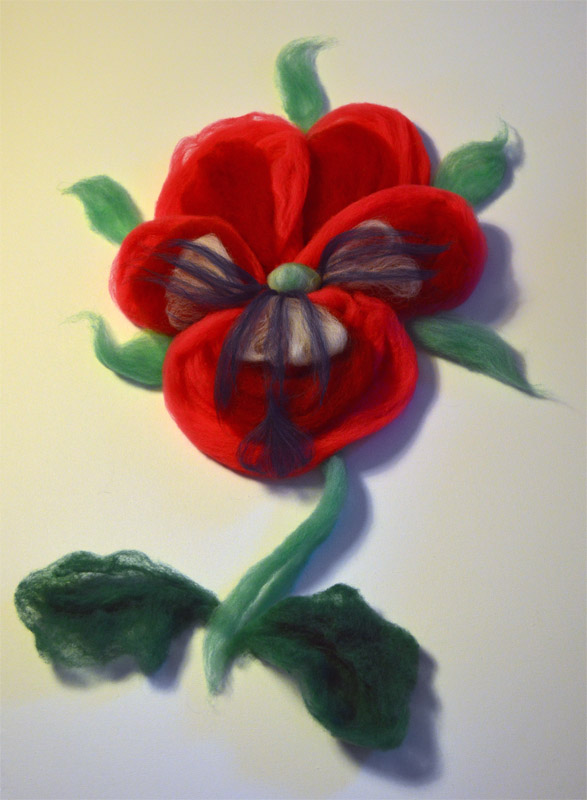 Hand-dyed *Heartsease
Hand-dyed *Heartsease 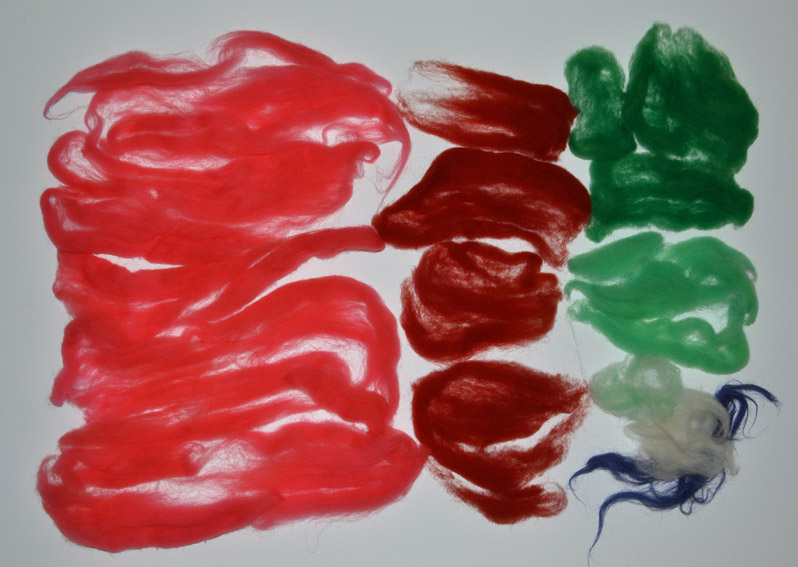 Fiber that went into the Heartsease. Ready for the next stage . . .
Fiber that went into the Heartsease. Ready for the next stage . . .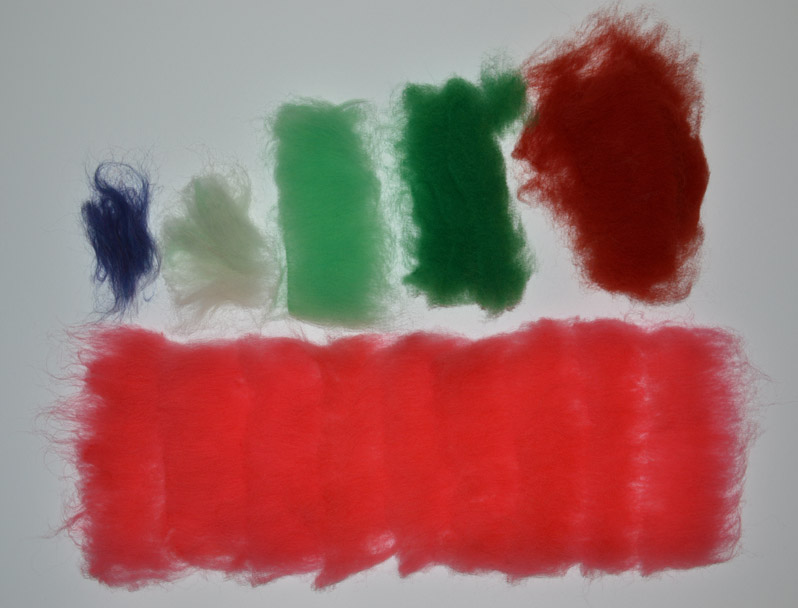 A light carding was just the thing to let those fibers draw out! Here, arranged by colors.
A light carding was just the thing to let those fibers draw out! Here, arranged by colors.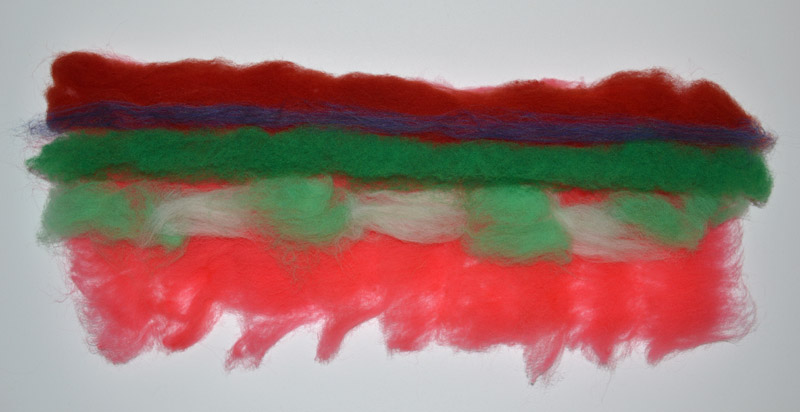 Trying out another way to arrange the colors in the skein (works well in small spaces and with minimal equipment). Perhaps this will lead to a series of wool omlettes, burritos, or Dagwood Sandwich!
Trying out another way to arrange the colors in the skein (works well in small spaces and with minimal equipment). Perhaps this will lead to a series of wool omlettes, burritos, or Dagwood Sandwich! After arranging the fiber colors in rows and layers, a wooden dowel helps to roll everything in a tidy cylinder.
After arranging the fiber colors in rows and layers, a wooden dowel helps to roll everything in a tidy cylinder.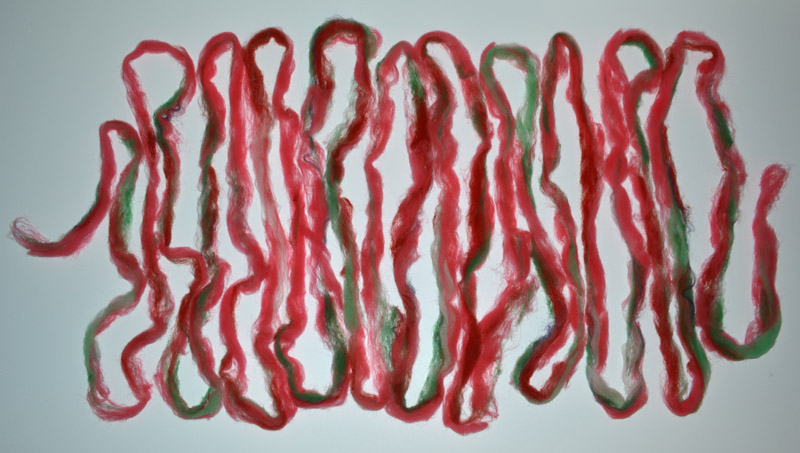 The next step is to patiently draw out the roll of fibers into a progressively thinner and longer bundle, this stage is called “pre-drafting”.
The next step is to patiently draw out the roll of fibers into a progressively thinner and longer bundle, this stage is called “pre-drafting”.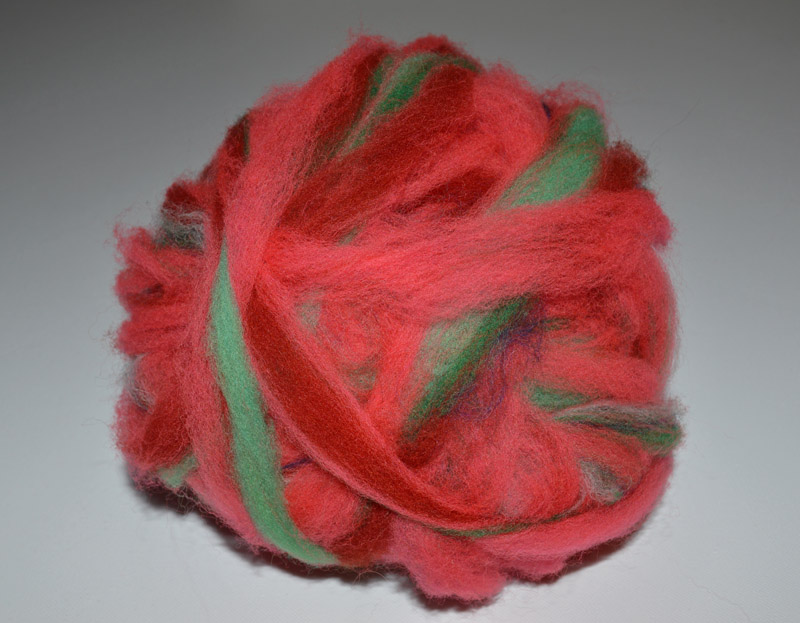 Gently rolling the pre-drafted fibers into a ball keeps everything from drifting apart and keeps it in handy proximity for spinning. Plus, it is fun!
Gently rolling the pre-drafted fibers into a ball keeps everything from drifting apart and keeps it in handy proximity for spinning. Plus, it is fun!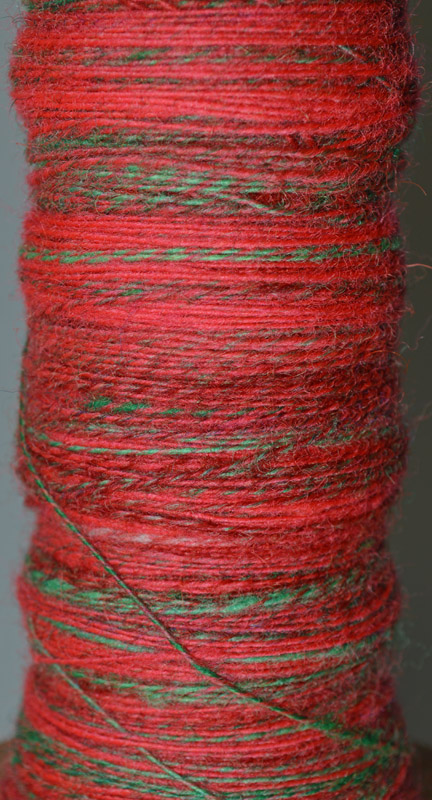 Yarn spun into a “single”.
Yarn spun into a “single”.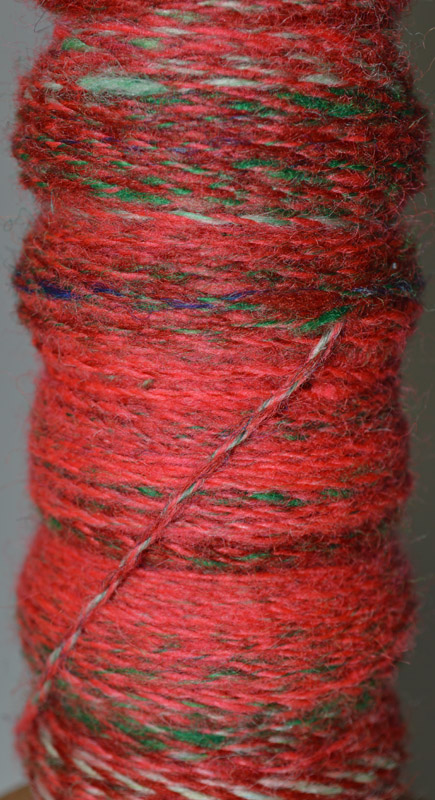 Yarn doubled back on itself and respun into a plied yarn.
Yarn doubled back on itself and respun into a plied yarn.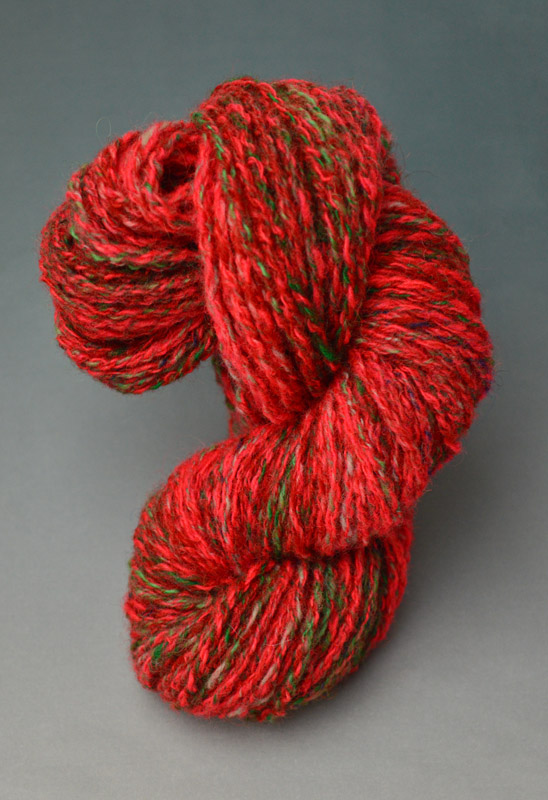 Final product is a skein as cheerful as a Heartsease!
Final product is a skein as cheerful as a Heartsease!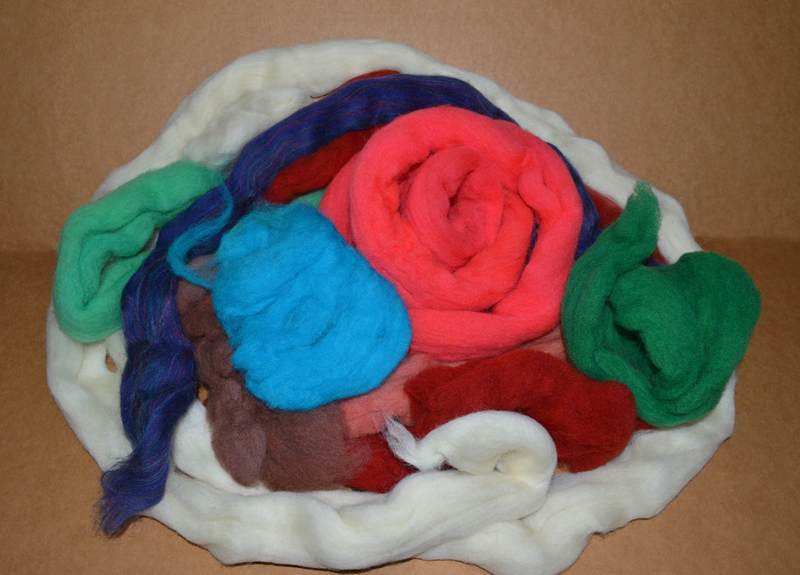
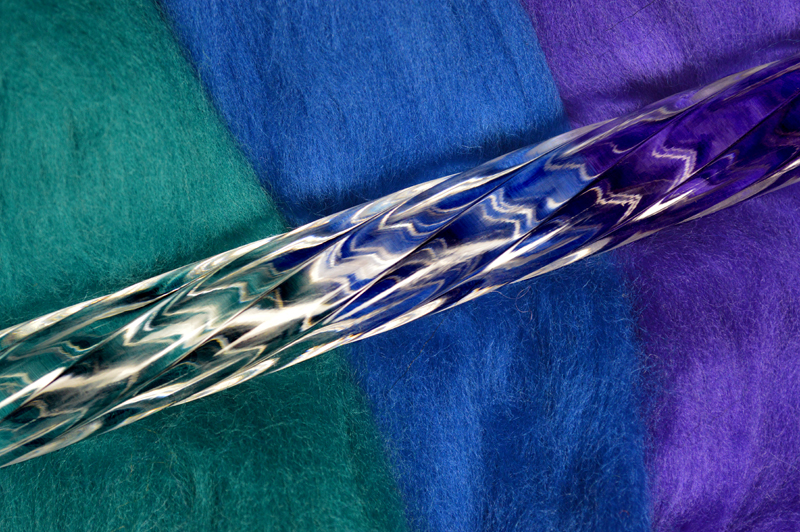
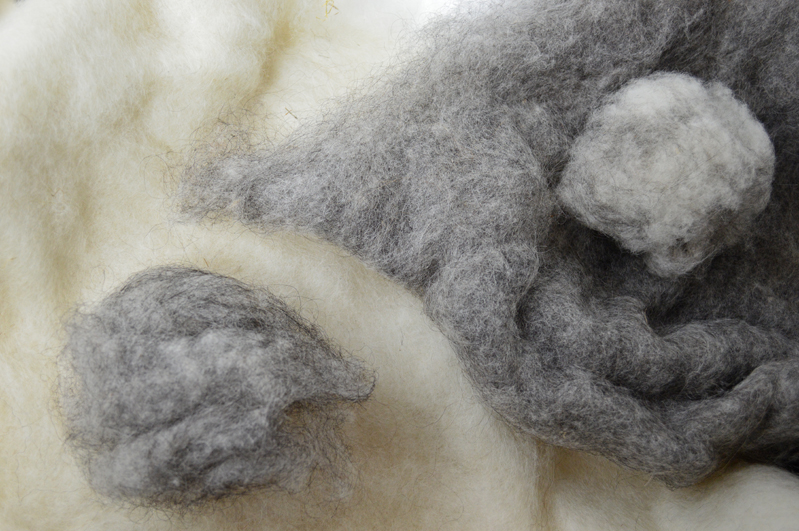

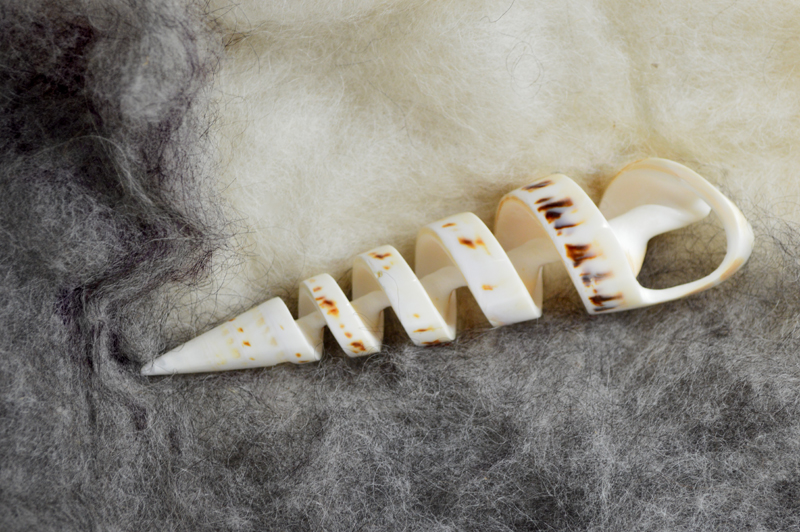
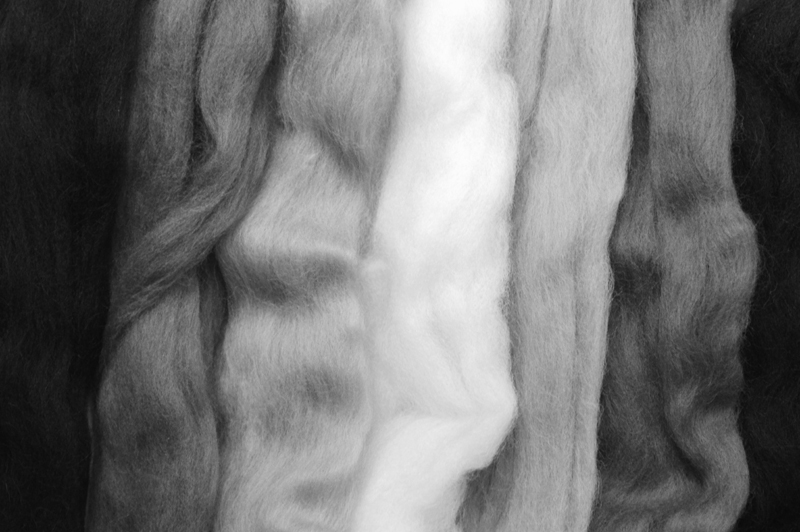
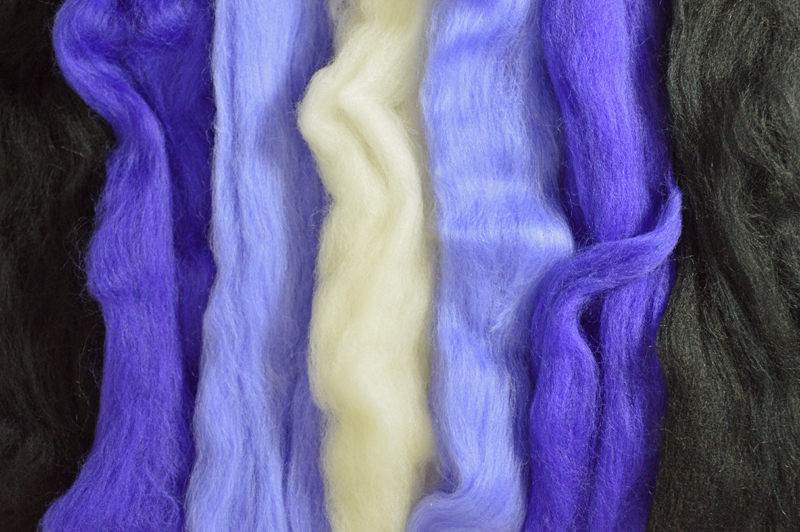
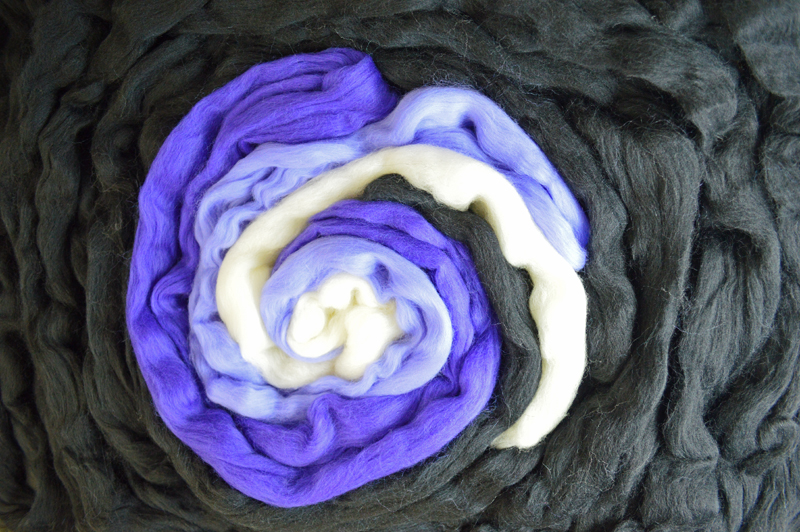
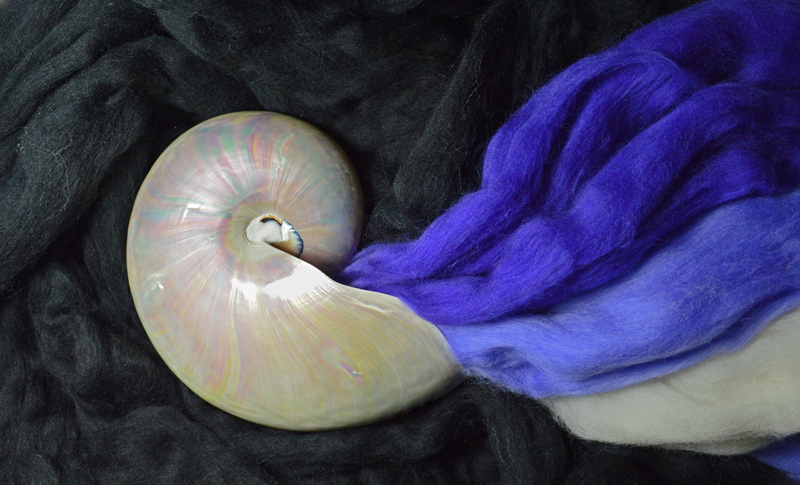
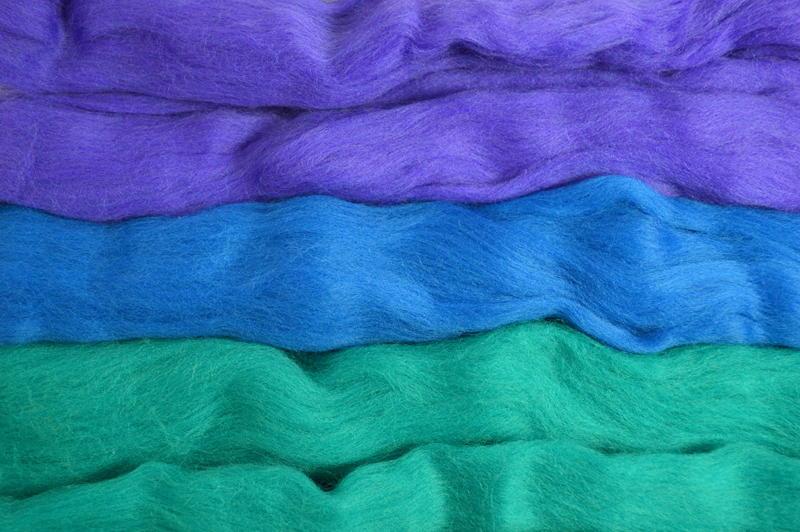
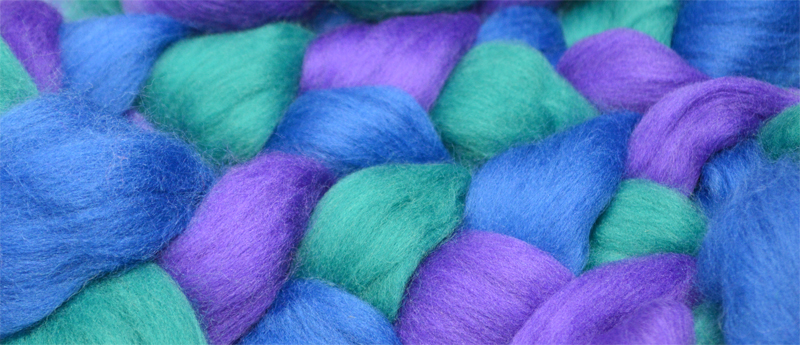
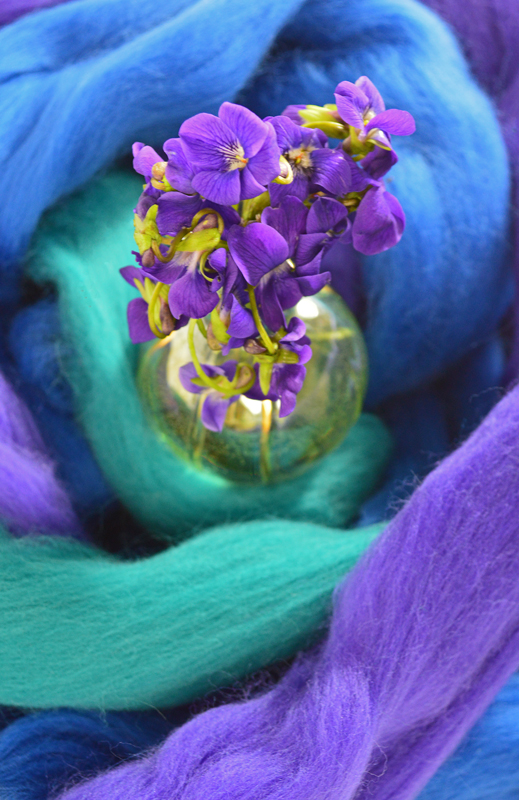
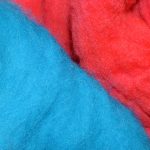 Of course, other people may dive right into high contrast and/or complementary colors to find their comfort zone. The point is that being aware of comfort zones can help an artist create them as needed and even notice those zones change as the artwork progresses. Comfort zones definitely belong in studios!
Of course, other people may dive right into high contrast and/or complementary colors to find their comfort zone. The point is that being aware of comfort zones can help an artist create them as needed and even notice those zones change as the artwork progresses. Comfort zones definitely belong in studios!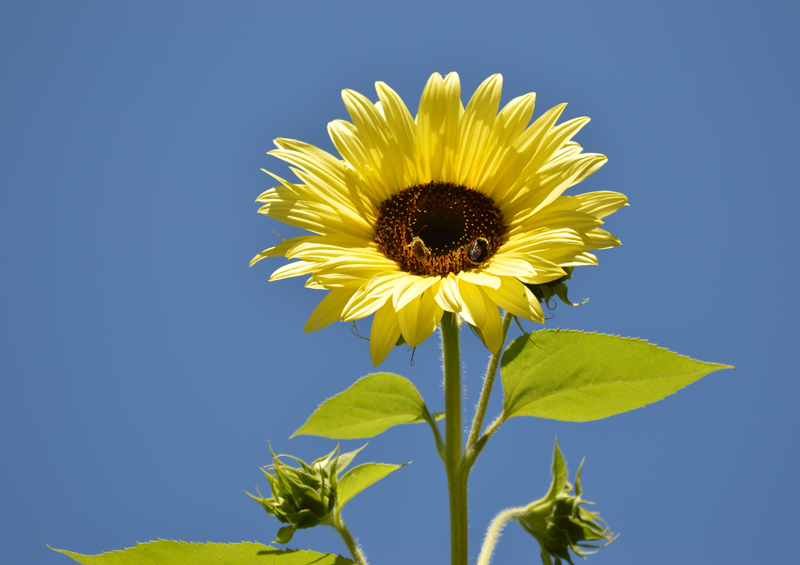
 Yellow Sunflower had grown with the loving care of its Gardener who protected it from every danger as seed and seedling, marveled at its hourly growth . . .
Yellow Sunflower had grown with the loving care of its Gardener who protected it from every danger as seed and seedling, marveled at its hourly growth . . .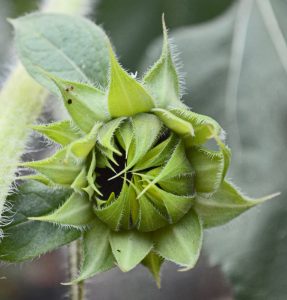
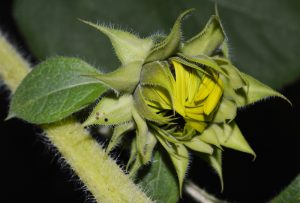


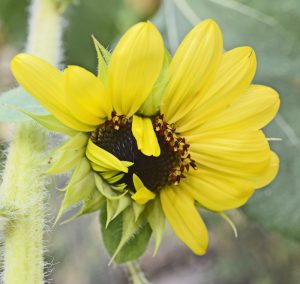


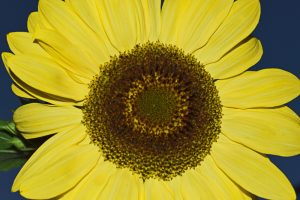 Yellow Sunflower was so occupied with BASKING IN THE SUNLIGHT, DELIGHTING THE BEES, AND GROWING SEEDS FOR THE BIRDS, that it was oblivious to the special care it received from the Gardener.
Yellow Sunflower was so occupied with BASKING IN THE SUNLIGHT, DELIGHTING THE BEES, AND GROWING SEEDS FOR THE BIRDS, that it was oblivious to the special care it received from the Gardener. What did catch Yellow’s attention was one day overhearing the Gardener’s excitement that there was a Red Sunflower about to open!
What did catch Yellow’s attention was one day overhearing the Gardener’s excitement that there was a Red Sunflower about to open!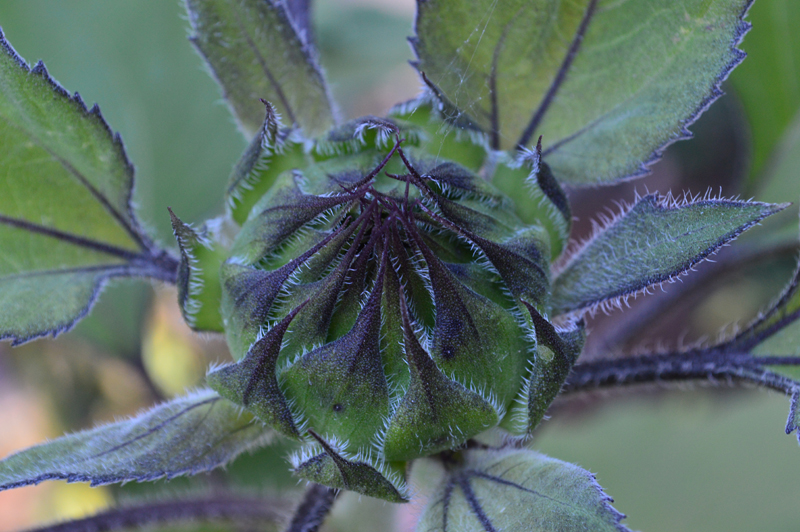
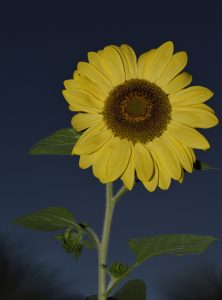
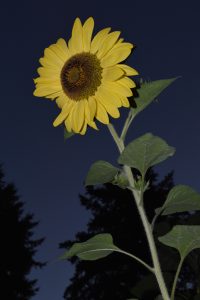 The gloominess grew in the garden.
The gloominess grew in the garden. 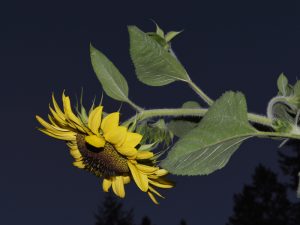
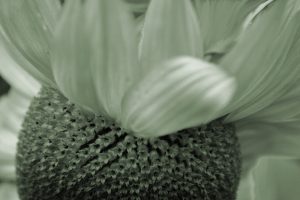
 “You might even say, ‘I’m hueless about how to change color!”
“You might even say, ‘I’m hueless about how to change color!”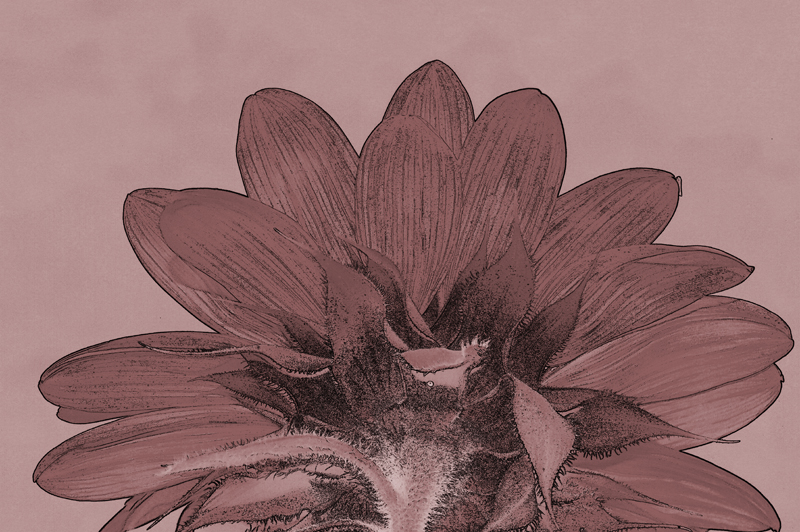
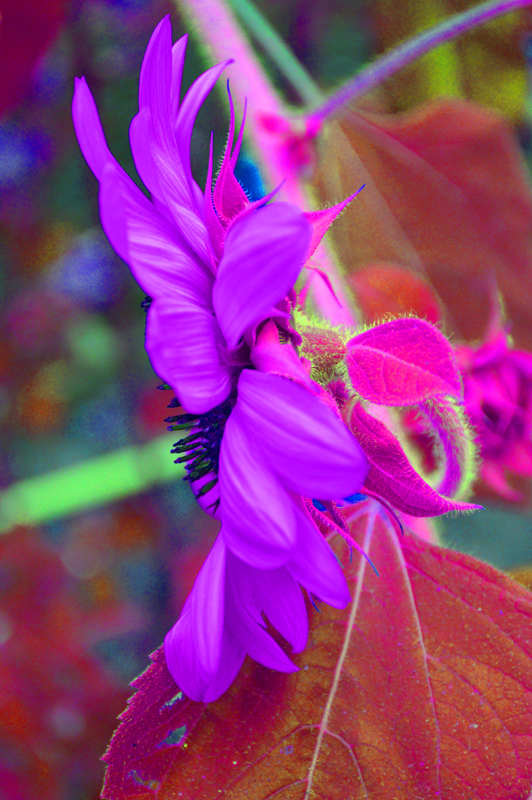

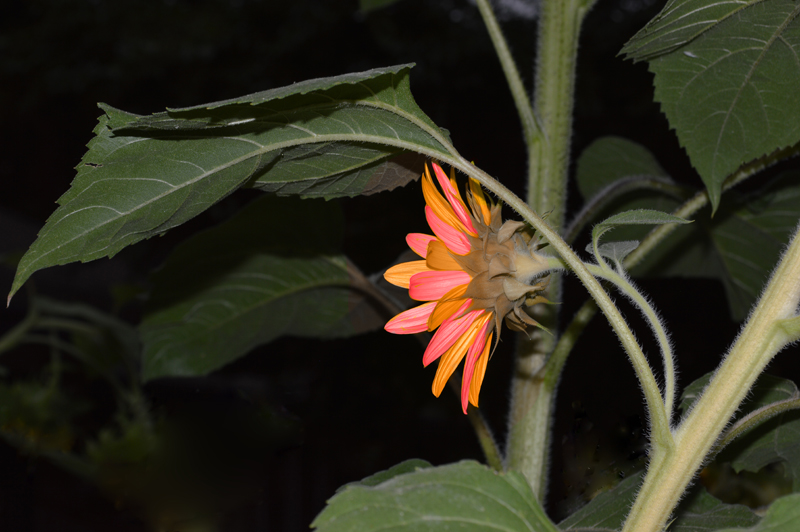
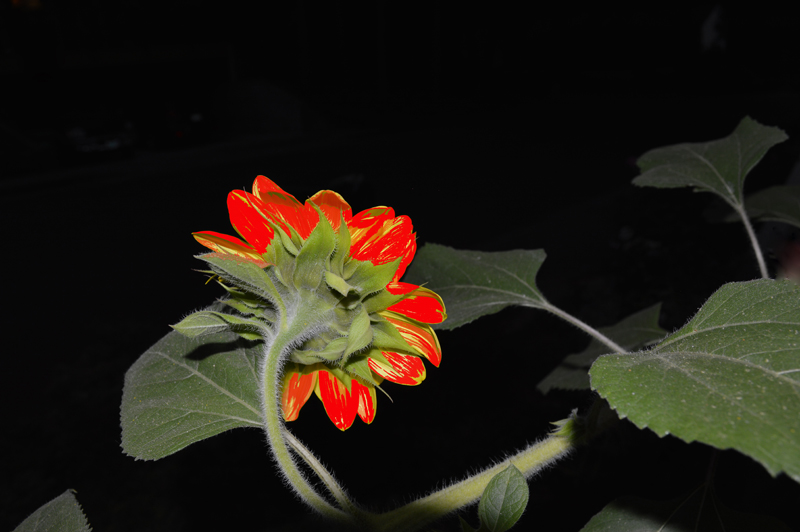
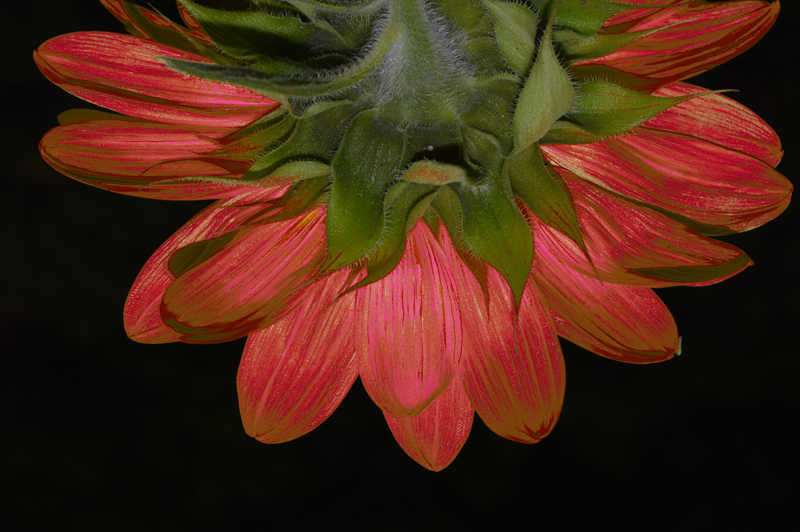
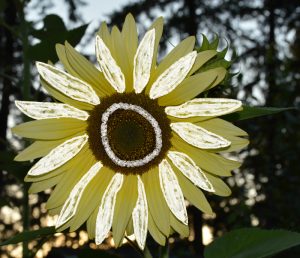
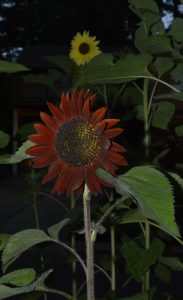
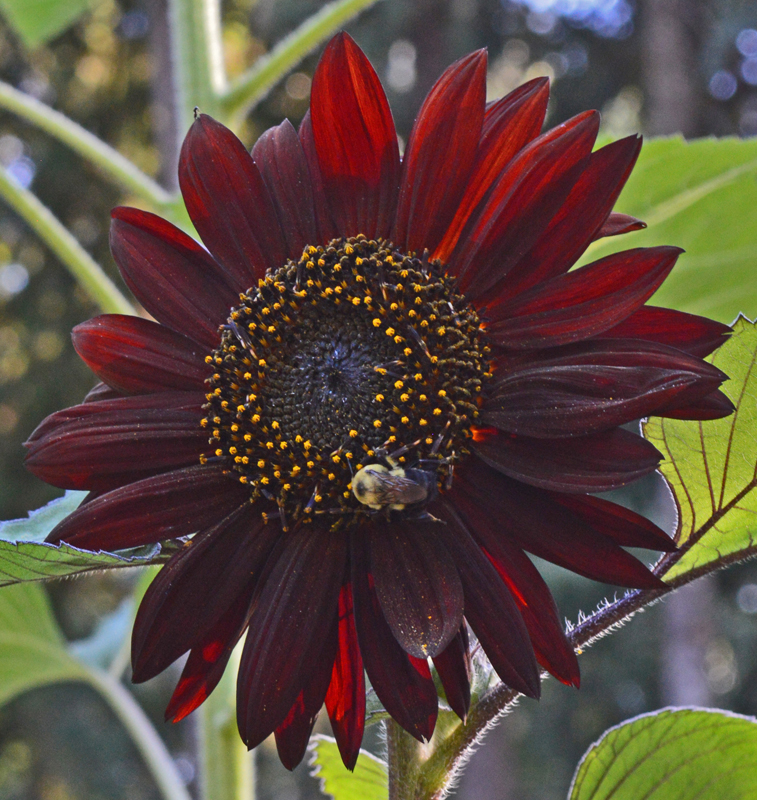
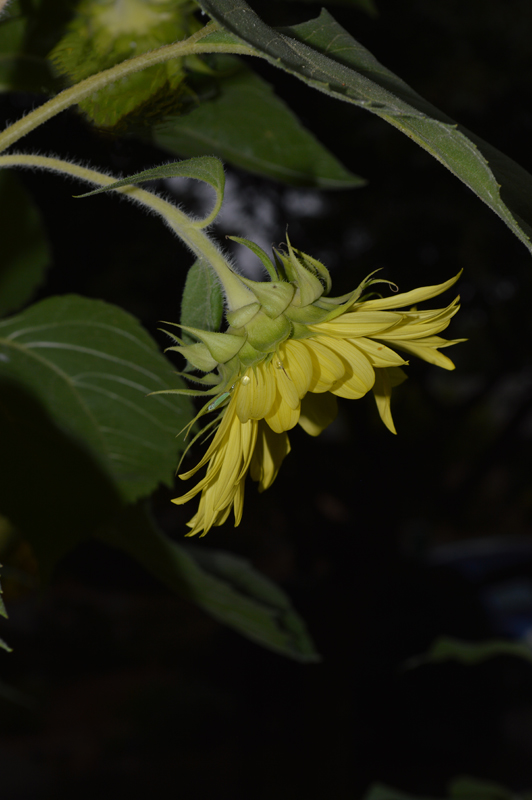 Dawning of realization can occur after sunset for Sunflowers. For the benefit of those Dear Readers confined to a tiny screen:
Dawning of realization can occur after sunset for Sunflowers. For the benefit of those Dear Readers confined to a tiny screen: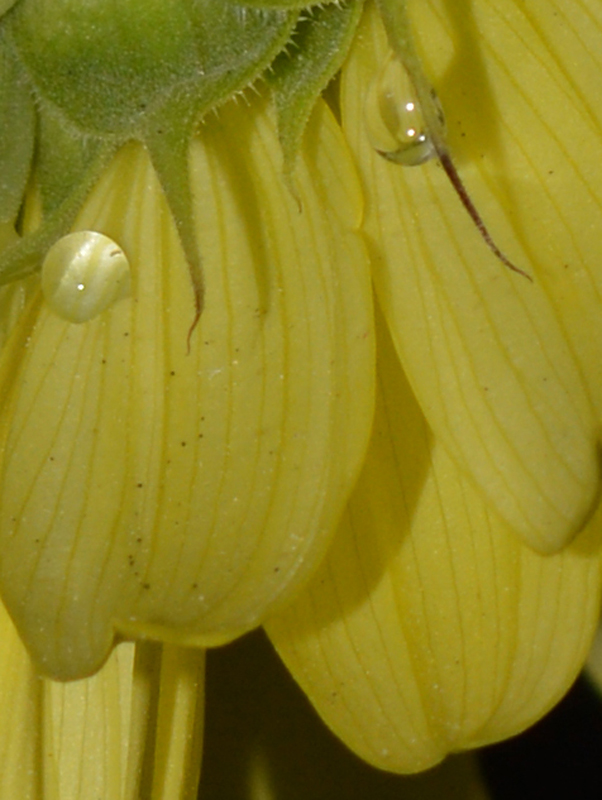 And then, Yellow Sunflower realized the beauty in the garden was that ALL the sunflowers equally GLORIED IN THE SUN, NOURISHED THE BEES and GREW SEEDS TO SHARE IN THE FUTURE! Sharing one’s gifts is wonderful of course, but recognizing them in one another is what makes them feel like a gift! When Yellow appreciated Red’s gifts, Yellow felt special too!
And then, Yellow Sunflower realized the beauty in the garden was that ALL the sunflowers equally GLORIED IN THE SUN, NOURISHED THE BEES and GREW SEEDS TO SHARE IN THE FUTURE! Sharing one’s gifts is wonderful of course, but recognizing them in one another is what makes them feel like a gift! When Yellow appreciated Red’s gifts, Yellow felt special too!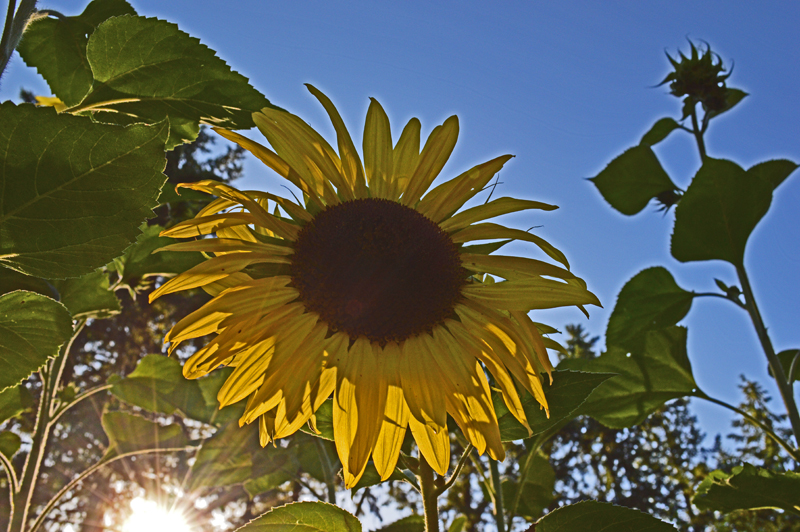
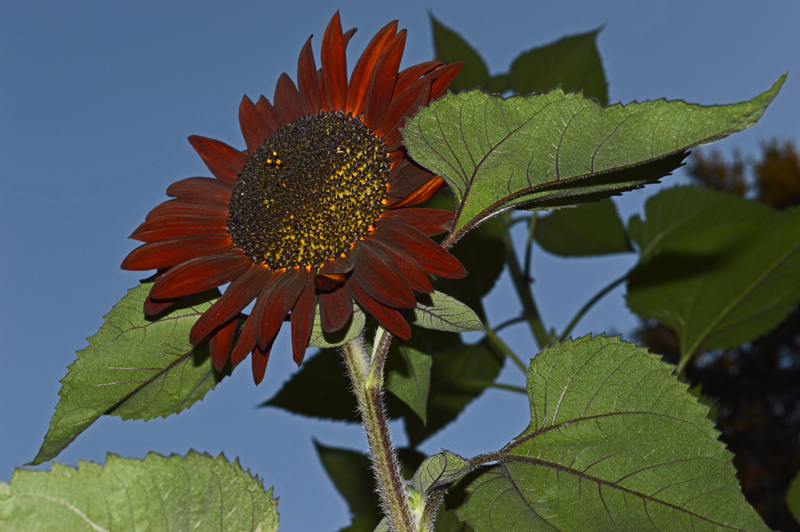
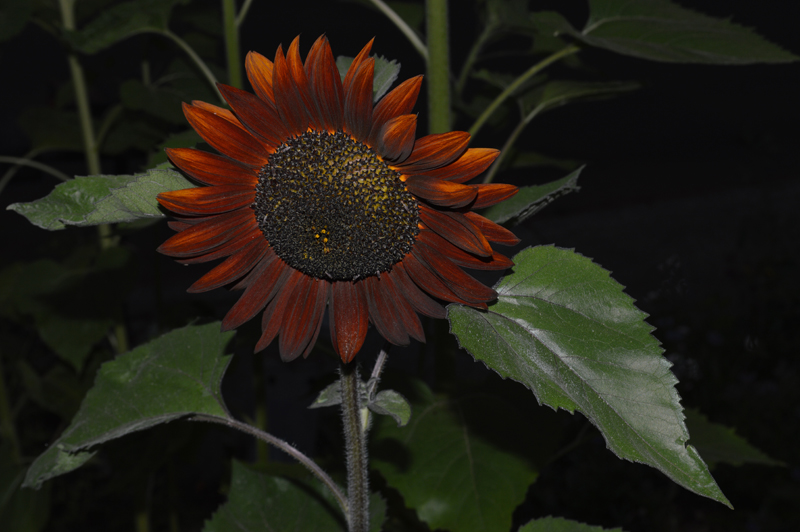
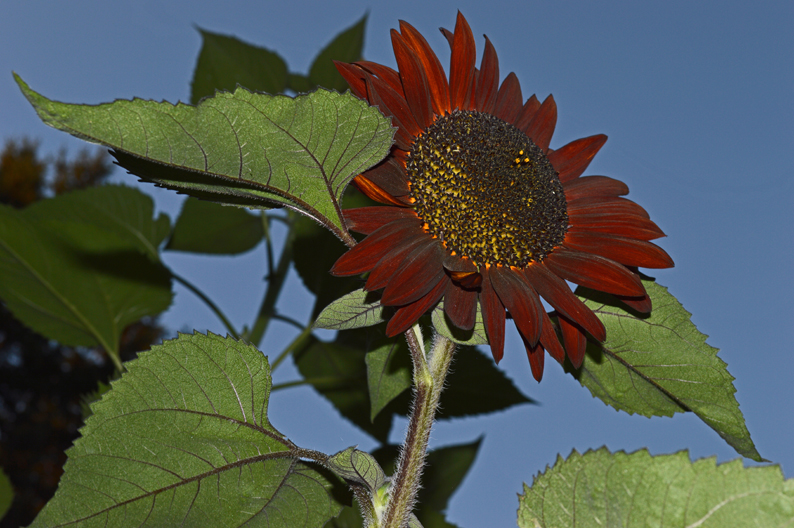 Red Sunflower was so occupied doing its own thing that it was completely oblivious to all this drama!
Red Sunflower was so occupied doing its own thing that it was completely oblivious to all this drama!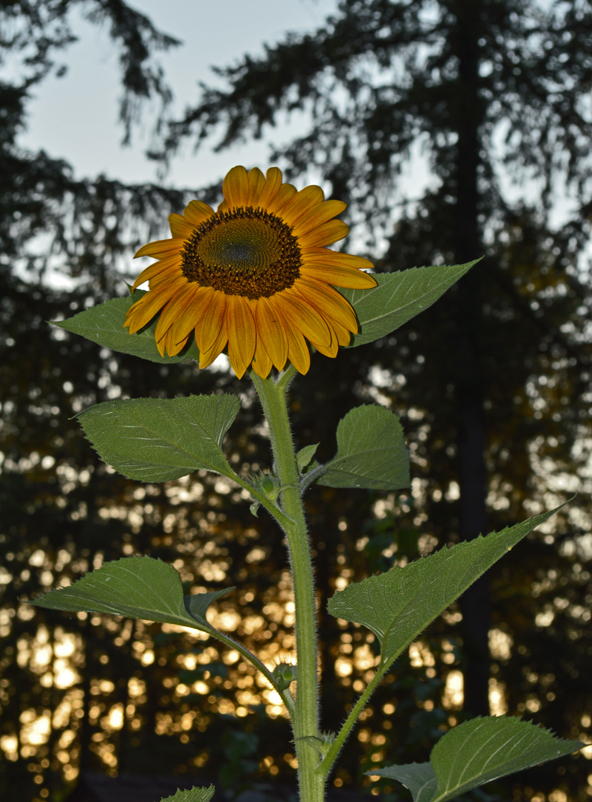
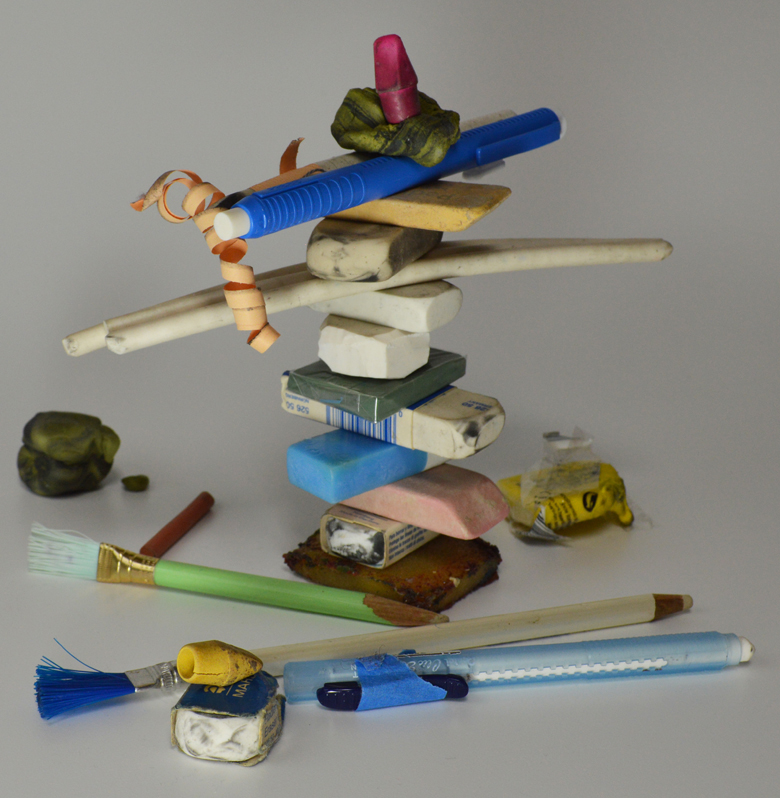 “Eraser Still-Life” various erasers from our studios, “Dodge” feature example
“Eraser Still-Life” various erasers from our studios, “Dodge” feature example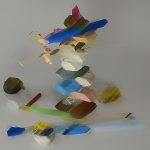 While learning about unfamiliar Photoshop options for our digital photographs the “undo” button has become our most used option. For those unfamiliar with this feature, it erases experiments so it is risk-free to try out all sorts of new looks for a photograph. Click on “Edit” at the top of the screen, click on “Undo” when it shows up and Voila! the photograph is ready to try something else wild.
While learning about unfamiliar Photoshop options for our digital photographs the “undo” button has become our most used option. For those unfamiliar with this feature, it erases experiments so it is risk-free to try out all sorts of new looks for a photograph. Click on “Edit” at the top of the screen, click on “Undo” when it shows up and Voila! the photograph is ready to try something else wild.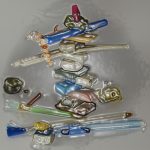 rewedging. With knitting, “tink”* is the new word for unknitting. With crochet, one tug on the strand and it ravels as if watching animation. Drawing not making the mark? Turn the paper over and start afresh. Is the typewriter spewing drivel? Zip out that paper, tear it up, toss it in the blender with water and make a cast-pulp sculpture tribute to your Muse.
rewedging. With knitting, “tink”* is the new word for unknitting. With crochet, one tug on the strand and it ravels as if watching animation. Drawing not making the mark? Turn the paper over and start afresh. Is the typewriter spewing drivel? Zip out that paper, tear it up, toss it in the blender with water and make a cast-pulp sculpture tribute to your Muse.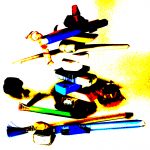 Creativity is a PROCESS. Sometimes it seems one step forward and 90 steps backwards. Well, isn’t that choreography? – ah ha! more creativity!
Creativity is a PROCESS. Sometimes it seems one step forward and 90 steps backwards. Well, isn’t that choreography? – ah ha! more creativity!